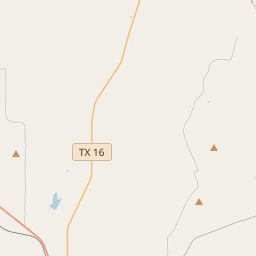The Settlement of Williams Ranch
Historical marker location:






Once a prominent frontier town, Williams Ranch grew up around the homestead of cattleman John Williams (1804-1871), who came to this area in 1855. The community flourished during the Civil War (1861-1865) because of trade with Mexico and by 1874 had stores, saloons, a hotel, mill, and blacksmith shop. In 1875 Henry Ford and J. M. Parks bought most of the land in the village and platted a townsite. They proposed the name "Parksford" but "Williams Ranch" prevailed when the post office opened in 1877. The community was a stage stop and a roundup point on the western cattle trail. It claimed the first hotel, newspaper, telegraph, and public school in Brown and Mills counties. In 1881 it was one of the towns considered as a site for The University of Texas. Williams Ranch reached its peak of activity in the early 1880s, with a population of over 250. The settlement began to decline when the railroad bypassed it in 1885. An outbreak of mob violence was quelled by the Texas Rangers in 1887. By 1892 the post office and all businesses had closed. Today the site is marked by the natural springs that attracted the original settlers and by Williams Ranch Cemetery, burial place of many pioneers and their descendants
As one of the most visible programs of the Texas Historical Commission (THC), historical markers commemorate diverse topics in Texas history, including: the history and architecture of houses, commercial and public buildings, religious congregations, and military sites; events that changed the course of local and state history; and individuals who have made lasting contributions to the state, community organizations, and businesses.
Texas is home to the world's largest bat colony. The Bracken Bat Cave, near San Antonio, is home to millions of Mexican free-tailed bats.
In 1854, Mills County was officially established by the Texas legislature and named after John T. Mills, a lawyer and soldier who fought in the Texas Revolution. The county's development was primarily driven by agriculture, with cotton becoming the dominant crop. The arrival of the railroad in the late 1800s further boosted the local economy, enabling the transportation of goods and facilitating trade.
With its rich soil and favorable climate, Mills County prospered throughout the late 19th and early 20th centuries. However, like many rural areas during this time, it faced challenges such as droughts, economic downturns, and the Great Depression. These hardships impacted the county's agricultural sector and led to a decline in population.
Despite these challenges, Mills County has maintained its unique character and close-knit community throughout the years. Today, it is known for its beautiful landscapes, historic sites, and outdoor recreational opportunities. The county continues to be influenced by its agricultural heritage while embracing the modern era, making it an interesting and dynamic place to live and visit.
Mills County Timeline
This timeline provides a concise overview of the key events in the history of Mills County, Texas.
- 1837 - Mills County is established and named after Texas Governor Branch Tanner Archer.
- 1849 - Gold is discovered in the county, leading to a short-lived gold rush.
- 1854 - Mills County becomes a part of the newly formed Brown County.
- 1876 - Mills County is reestablished as an independent county.
- 1880 - The county seat is established in Goldthwaite.
- 1920s - The oil industry has a significant impact on the local economy.
- 1947 - Mills County celebrates its centennial.
- 1965 - A severe flood causes significant damage to the county.
- 1990s - The county experiences economic growth due to an increase in tourism.
- 2018 - Mills County celebrates its 181st anniversary.